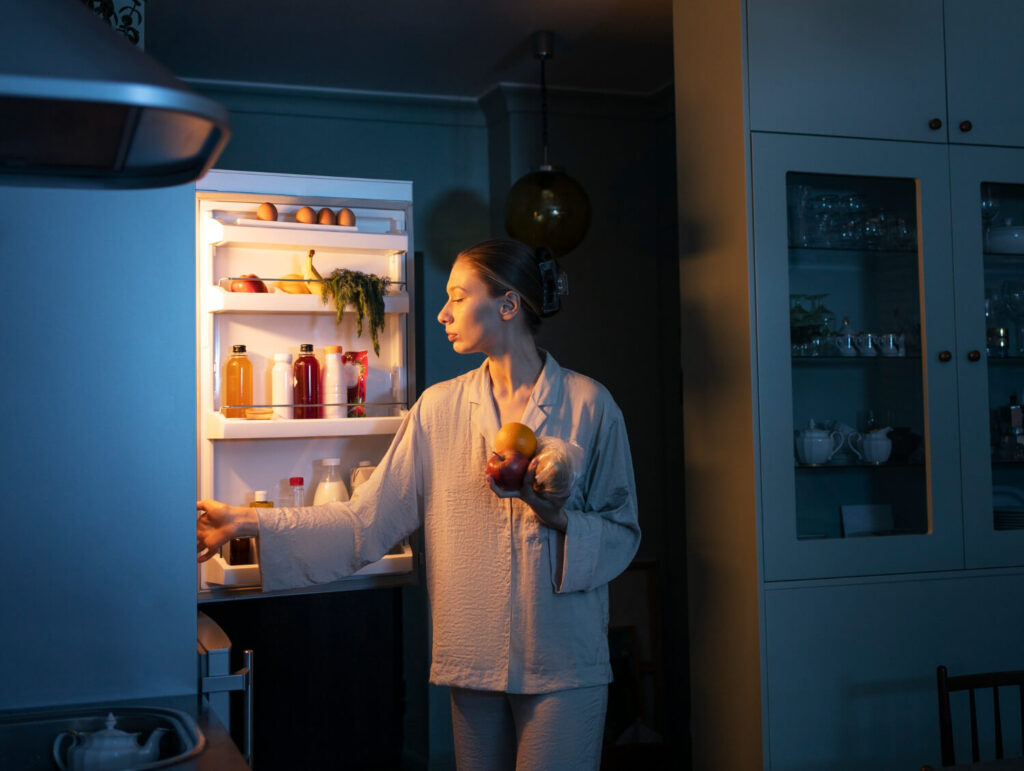
We all rely on our fridge to keep perishable foods cold and fresh for longer. However, it can use a fair bit of electricity as it is never turned off at the mains. If you are looking at ways of lowering electricity bills, the fridge may not, therefore be your first thought. However, there can be several cost savings to be found via refrigerator efficiency measures that could become part of more sustainable living. These include switching to solar battery storage instead of relying on mains electricity to power your fridge and freezer.
Here are some more fridge and freezer energy efficiency tips for you to think about, ahead of the late spring and summer seasons.
Keep it clean
We all like to see a clean, hygienic and mess-free fridge. However, how many of us regularly clean the outside of the fridge as well as the inside? Dust and dirt that builds up on the condenser coils at the back of the fridge can stop the fridge from cooling properly, putting pressure on its mechanisms and reducing its efficiency by as much as one-quarter of its normal capabilities. Pull the fridge out so that you can access to the condenser coils and gently vacuum them to get rid of surface dust. Use a brush to shift any stubborn dust or dirt for greater energy efficiency. Vacuum underneath the fridge too, to stop any dust or dirt getting clogged up in the mechanisms and reducing energy efficiency.
Check the seals
If your fridge or freezer doors won’t close properly, the cold air will escape, leading to inefficient cooling and a lower return on investment (ROI). Your appliance will need to work harder and use more electricity to replace the cool air and keep your food chilled or frozen. Check the door seals regularly for signs of damage, warping or hardening. You can usually replace them yourself for very little money, helping keep the costs of energy management down. Keep a regular eye on temperatures inside the fridge or freezer to make sure that the seals are working properly.
Savvy storage
Never put hot food straight into the fridge, such as leftovers or freshly-baked goods. Allow them to cool down first on the side, or on a cooling rack. This will stop the heat from the newly introduced food from raising the temperature inside the fridge. Don’t leave leftovers sitting on the side for more than two hours for food safety reasons, however. If you have time, defrost frozen food slowly inside the fridge rather than leaving it out, or using your microwave’s ‘defrost’ function. The much lower temperatures of the defrosting food will help cool the rest of the refrigerator and reduce the work it has to do to keep everything cold inside.
Think before you open – or restock the fridge
Don’t overload the fridge, or it will be harder to keep things cool and prevent spillages inside. Keep it reasonably full, though, so you are not paying to chill empty space. Try not to open the door too often, or keep it open for too long. This will let
more warm air inside, reducing the effects of your energy-saving appliances on the electricity usage and household bills.
Choose energy-saving appliances
If it is time to upgrade your fridge or freezer, or you are looking for a second or even third model for extra food storage, choose an energy-efficient model, or one that can run using renewable energy. Check the energy rating of your energy-saving appliances to find the best one for sustainable living. Usually, the ratings go from A (most energy-efficient) down to G. You should balance the energy efficiency rating with size, price, capacity and other considerations when choosing your new fridge or freezer.
Solar panel installation
Last, but by no means least, solar panel installation really can make a huge difference to electricity costs. This is not just for fridges and freezer, but throughout the house. Households can enjoy maximising solar savings by switching wholly or partially to off-grid power for running kitchen and other appliances. Collecting solar power during the day means that any excess can be transferred to solar battery storage. This ensures that your fridge and freezer can continue to be powered throughout the night to keep food chilled or frozen and ready to enjoy.

